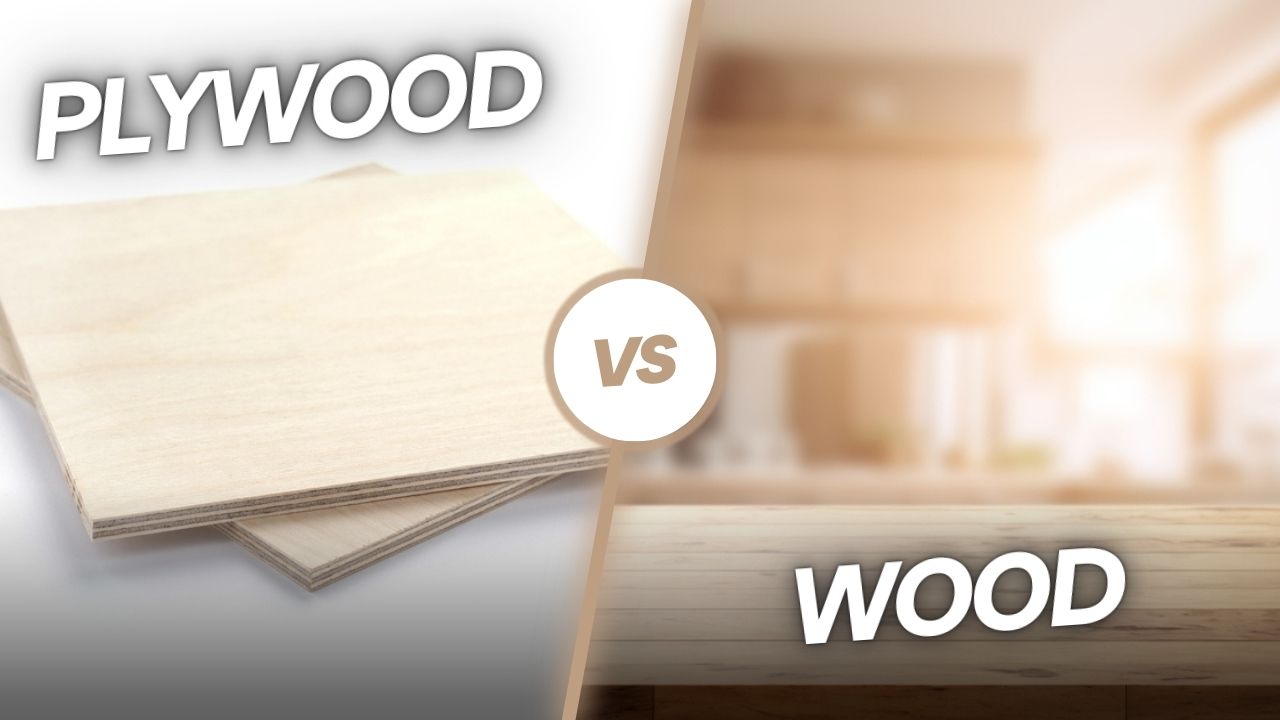Plywood Vs Wood: Which Should You Pick?
Plywood Vs. Wood: Which Should You Pick?

Plywood and natural wood frames both have their place. However, they are not interchangeable! At Plysupply, customers often think they are the same thing.
Plywood frames are made by gluing wood veneers using pressure to make one board. It’s cheaper and comes in bigger sizes than solid wood, making it perfect for cabinets and shelves. Solid wood is cut straight from trees and it costs more. However wooden objects are considered fancy and of better quality.
There are many timber wood suppliers and plywood suppliers in Perth and elsewhere that are spoiled for choice. Plysupply has all the various kinds of plywoods all under one roof.
Plywood Or Wood – When to Use Each
Size: The Main Consideration
One of the main reasons to use plywood frames is that you can use wider slabs. With dimensional lumber, even the biggest trees will present trouble, as slabs from these trees are very heavy. Also, they are unstable and difficult to season and finish.
If you’re going to need a big, flat piece of material, plywood is your best.
Furniture material suppliers will tell you that cabinet making is also a common area to use plywood. Most, if not all, homes use plywood for the kitchen. You can get a lot of varieties when it comes to cabinet plywood in Perth. You will rarely see a timber frame house using timber in the kitchen.
The one exception to this is if you want a big flat piece to be the centerpiece of the kitchen or room.
In that case, a big piece of solid wood (or many smaller pieces glued together).
Be aware, though, that big chunks of wood are crazy expensive. Like, thousands of dollars expensive if you are talking about hardwood. This brings us to the next consideration…
Are Plywood Frames Cheaper Compared to Timber Wood Frames?
However, plywood in WA is considerably cheaper than natural wood.
Note that for this to apply, one needs to be comparing apples to apples. There are expensive and high end options available.
However, cheap plywood will generally cost less than cheap wood, and fancy plywood will still cost less than fancy wood. This is why people prefer plywood when looking for furniture materials as a cost-effective alternative.
Quality-wise, hardwood plywood is actually very nice, and if you’re looking to make a high-quality product, you are probably better off going with hardwood plywood as opposed to cheaper softwoods.
Is Plywood Prettier Than Solid Wood?
Finally, the last thing people usually take into account when picking between wood and plywood is if the wood/plywood is going to be seen.
People usually choose hardwood for things like tabletops.
For most other things, people prefer plywood because it is a very cost-effective solution.
Other Things To Consider
Stability
Wood comes from living things, and thus, it moves. The grain in the wood expands as it takes up moisture during humid weather and shrinks during dry winters.
Plywood, on the other hand, does not do this since the layers are fixed in alternating directions.
If you are working with a piece that needs extra stability, plywood is the way to go.
Is Plywood “Better” than Wood?
While there are certain things plywood does better compared to wood (and some things wood does better compared to plywood,) it’s hard to say if one is better compared to the other. It all depends on what is right for any given project.
One benefit of plywood over natural wood is that dimensional lumber will shrink and expand based on the weather. Also, it is much lighter than other things, and it is easier to polish or paint.
It’s also easier to cut and quick to set up. Joints can be made much more easily. This is because there is no expansion or contraction in plywood.
Finally, top-quality plywood is a treat for the eyes. The outer layers of plywood are picked for homogeneity and a range of knots. This kind of uniformity makes it hard to achieve edge-joining dimensional lumber.
However, a good piece of wood might have patterns that are sometimes more striking and interesting than plywood. Thus, it really depends on what you’re going for with any project.
Which Is Stronger: Wood Or Plywood?
In comparing equal kinds of pieces of wood and plywood, plywood is going to be stronger than wood.
Officially, there are many “buts” to this. Hardwood is stronger than softwood. Bigger pieces are stronger than solid ones. The direction you’re applying force (against or with the grain) matters.
In most applications, though, it does not matter. Wood and plywood are both very good materials. Still, plywood has more advantages overall. Also, plywood is only available in thinner dimensions. This is usually ¾ of an inch or less.
Manufacturing Differences
Wood, which is also called by different names such as dimensional lumber or solid wood. It comes straight from a tree and after that is cut to predetermined sizes. Such lumber is also dried in a kiln. This makes the planks harder and more durable.
Plywood is an engineered product consisting of several layers of wood veneer. These layers are connected in alternating directions and linked under pressure to improve the product.
The layers are alternated like this so that if overload or stress causes one set of grains to snap, the next layer will keep the wood together so that it doesn’t break in totality. It is called directional stability and the result is that plywood has the same strength in all directions.
A few things may go wrong at the time of the plywood manufacturing process. Gaps between veneer layers resulting from knots can utterly weaken plywood.
The glue and the method of pressure exerted are also very important. The layers will usually separate if moisture gets in between these layers and affects the glue. This separation is called delamination.
What to Actually Buy
So let’s break this down. If you require a large, flat piece of material, go with plywood as your best bet. If you need it to look nice, go with hardwood plywood. These can be customized into just about what you want.
For plywood that is going to be seen, however it does not need to be beautiful, a lot of customers like pine plywood.
For plywood, that is not going to be seen; people tend to go with plywood sheathing. This is becoming a very popular choice as time goes by.
If you want smaller pieces, and wish to avoid dealing with edging difficulties, timber wood is a good choice.
